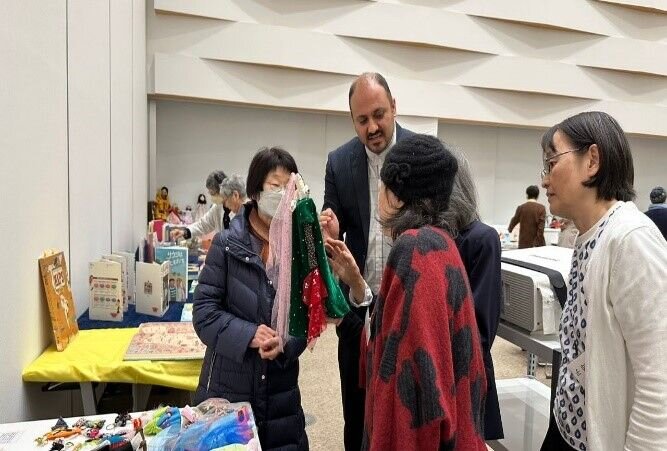Handmade Iranian dolls on view in Japan

TEHRAN – Collections of handmade dolls and puppets from every corner of Iran have been put on show at an exhibition held in Japan’s Tama.
Organized by the cultural office of Tehran's embassy in Tokyo, the event opened to the public on November 11 in the city located in the western portion of the Tokyo Metropolis, IRNA reported.
The Iranian offerings included some 150 tribal dolls each attached with a guide-paper to provide visitors cultural, ethinc backgrounds, the report said.
Those figurines depict different members of traditional Persian tribes each with their own unique traditions, customs, and way of life, history, culture and geographic region probably descended from a common ancestor.
Nomadic Iranian dolls are made of a wide variety of materials, such as ceramic, wood, or cloth, and may be hand-painted or mass-produced. Sometimes, they depict different aspects of tribal lifestyle, traditional clothing, daily activities, or cultural rituals.
The equivalent word for both doll and puppet in Persian is Arousak which literally means "the little bride". The bride is a representation of the mother goddess in Mesopotamia, Ishtar, who was the goddess of love and fertility in the sacred marriage tradition. However, in most cases today, the dolls are at risk of vanishing.
Moreover, dolls and puppets are more than decorative objects. In fact, they may be used as educational tools as well. Sara and Dara are among the most famed traditional dolls in the country designed as an alternative to the Barbie doll. Sara and Dara are available in different styles, modeled after a traditional clothing.
Iran has a culturally diverse society dominated by a wide range of inter-ethnic relations. Native speakers of Persian (Farsi language) are considered the predominant ethnic generally of mixed ancestry, and the country has important Turkic, Kurd, and Arab elements in addition to the Lurs, Baloch, Bakhtiari, and other smaller minorities such as Armenians, Assyrians, and Jews. Persians, Kurds, and speakers of other Indo-European languages in Iran are descendants of the Aryan tribes who began migrating from Central Asia into what is now Iran in the second millennium BC.
AFM
